
 As another year draws to close (and without the Apocalypse that no-one sensible was expecting) we take a moment to reflect on what has been a busy and exciting year for Anne and Chris.
As another year draws to close (and without the Apocalypse that no-one sensible was expecting) we take a moment to reflect on what has been a busy and exciting year for Anne and Chris.
The year started off with lots of travel and excitement, setting the stage for the rest of the busy year. By mid-January, Chris had taken his fourth trip to the ScienceOnline conference in North Carolina, meeting with some old blogging friends and making some new ones and Anne’s daughter had a very science-y birthday party at the local museum in Charlotte, which included feeding a horseshoe crab. By the end of the month, Chris topped all of that by going to Hawaii and getting to observe hotspot volcanism in the wild, visiting Mauna Kea, Mauna Loa, Kilauea, and Kohala.
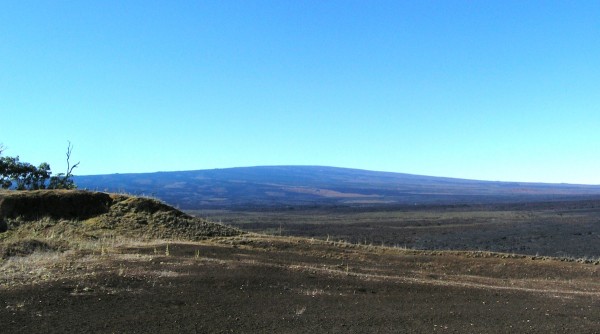
Mauna Loa: a classic shield volcano. Photo: Chris Rowan, 2012.
In February, we shared a special moment on the shores of Mountain Island Lake in North Carolina. In March, Anne spent time in the field with her grad students and her classes and got to give river blogger Coconino a tour of some of Charlotte’s stream restoration sites.
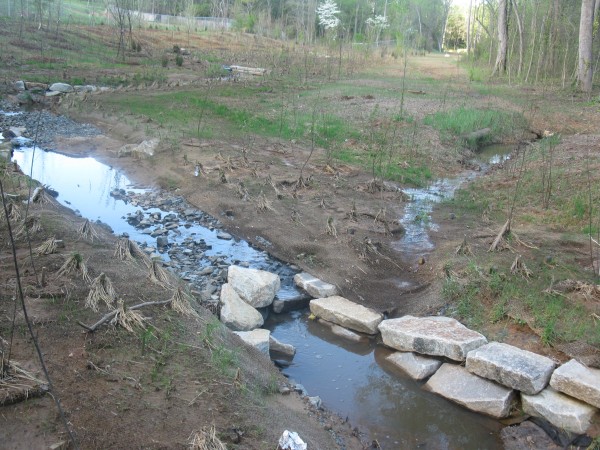
Brand new stream restoration on the Winterfield tributary of Edwards Branch, Charlotte, NC. Structure shown is a cross vane. Photo by A. Jefferson, March 2012.
In April, Anne moved. In May, Anne moved again. In between the moves, she made some time to go to her homeland, southeastern Minnesota’s Driftless Area, for some hiking, canoeing, and even a high ropes challenge.
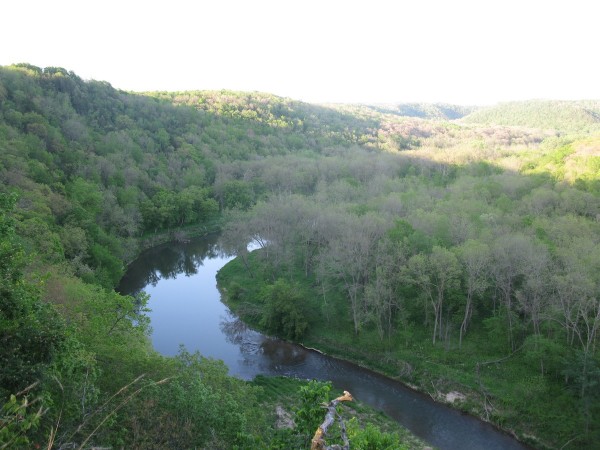
Root River, near Lanesboro, Minnesota. This river has excellent canoeing and a very nice bike trail alongside. Photo by A. Jefferson, May 2012.
In June, Anne went to an excellent workshop on techniques to measure groundwater-stream interactions put on by the fine folks at CUAHSI and Penn State University. She got to see a fiber optic distributed temeperature sensing system in action, watch electrical resistivity data be collected and interpreted, and help turn a stream purple with a fluorescent tracer. This workshop was a phenomenal educational experience that included the fundamentals and theories behind each technique, a chance to get our feet wet (in Anne’s case, literally) in the field, and some time in the chemistry and computer labs making sense of the data. We also got a tour of the Shale Hills CZO, one of the most densely instrumented watersheds in the world.
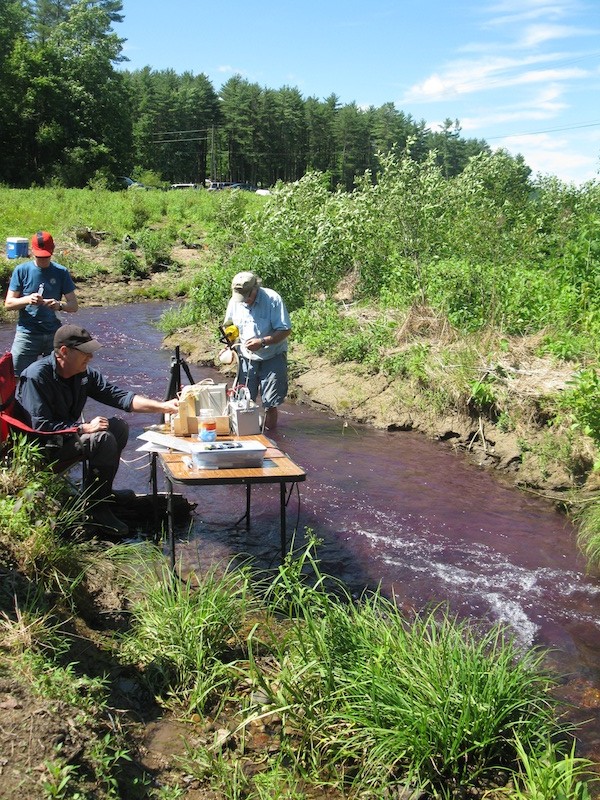
The experimental stream, complete with hydrologists sampling surface water and using mini-piezometers to withdraw water from the streambed.
In July, Anne went to Boulder, Colorado for the CUAHSI Biennial Science Meeting, had a great excursion with Kea and talked hydrology to her heart’s content. Then, she moved again – for the last time, she might add. In August, September, and October, Anne had little travel as she started work at Kent State, settled in to her new office and lab, and got to know the surrounding area. Of course, in academia, ‘little travel’ is a relative thing: Anne still took a little excursion to Ashland University to give a talk on urban hydrology and a jaunt to the Purdue Conference for Pre-Tenure Women.
September also saw Chris in Cambridge – the upstart Massachusetts one, not his venerable alma mater – for a group meeting of the CIFAR group who funded his postdoc. This was his last chance to be alternately (and sometimes simultaneously) intimidated and inspired by some of the smarter Earth Scientists in the world, talk about some really big picture stuff, and discuss his latest findings on links between the spreading behaviour of some ocean ridges and the behaviour of the convecting mantle beneath them.
In November, Anne hardly felt like she was in Ohio at all, between GSA and field work in Charlotte and a trip to Baltimore’s Johns Hopkins and UMBC.
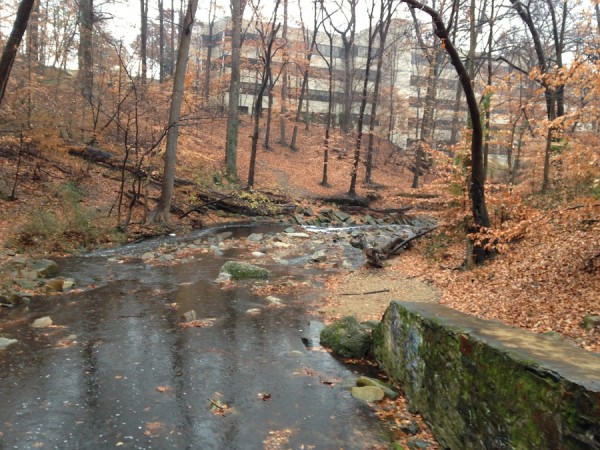
An unrestored reach of Stony Run, on The Johns Hopkins University campus, with the Space Telescope Institute in the background. Photo by A. Jefferson, November 2012.
In December, Chris went to AGU and blogged all about it. He also did some social media evangelism, met lots of interesting people, and had a very productive poster session.

AGU’s famous poster hall vortex.
After – or more accurately – during – that, he moved.
For the rest of December, we’ve tried to be more sessile, but it turns out that we couldn’t even make it the three weeks to the New Year. When this post goes up, airlines willing, we’ll be in the UK, where Anne is looking forward to seeing a land wracked by a year of unusually heavy rains and floods and Chris is looking forward to seeing friends and families, visiting a decent pub, and restocking his supply of Jaffa Cakes. Then we’ll…not be moving: in fact, our theme for 2013 could well be summed up as ‘less boxes, more adventure!’: we’re both hoping for much less travel for the sake of logistics, and much more travel for the sake of seeing stuff, be it friends, family, rocks or water. It will make for less stressful – and potentially more blog-able – lives for both of us.
![]() When in London, I find I’m drawn to the Thames. It’s a big river, and one that is inextricably tied to the history and heart of the city through which it flows. Unlike many of the Thames’s smaller tributaries, which were abused, then buried, and are now nearly forgotten, the Thames is big, brawny, and impossible to ignore. It carries the story of the city’s past and it is the pathway by which future sea level rise and storm surges might strike. Today, the Thames in London is crossed by bridges both towering and low, and is plied by tourist cruises and working tugs. It flows past shiny modern glass office blocks and pubs and parliament buildings hundreds of years old. But the flowing water takes the juxtaposition of built and natural, past and future and compellingly integrates them.
When in London, I find I’m drawn to the Thames. It’s a big river, and one that is inextricably tied to the history and heart of the city through which it flows. Unlike many of the Thames’s smaller tributaries, which were abused, then buried, and are now nearly forgotten, the Thames is big, brawny, and impossible to ignore. It carries the story of the city’s past and it is the pathway by which future sea level rise and storm surges might strike. Today, the Thames in London is crossed by bridges both towering and low, and is plied by tourist cruises and working tugs. It flows past shiny modern glass office blocks and pubs and parliament buildings hundreds of years old. But the flowing water takes the juxtaposition of built and natural, past and future and compellingly integrates them.
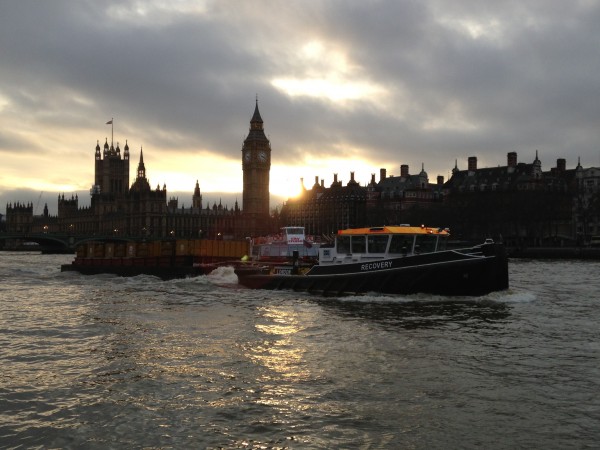






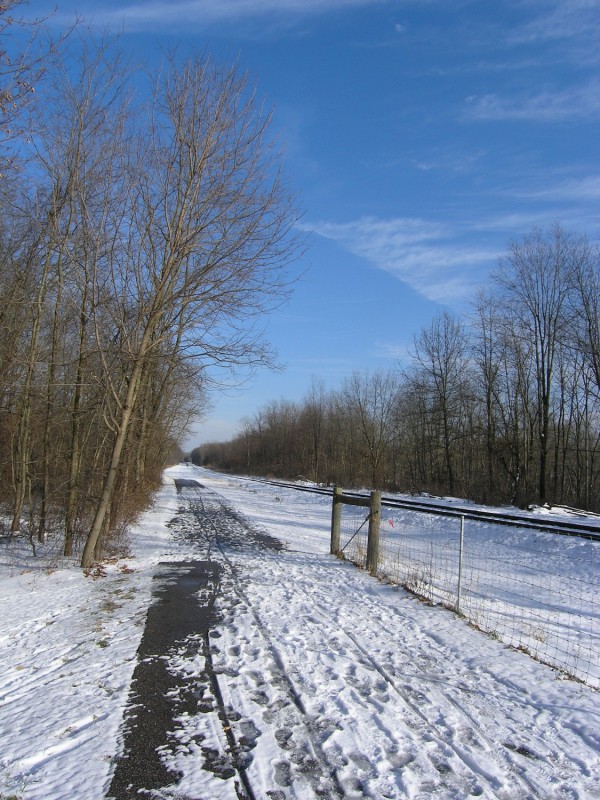
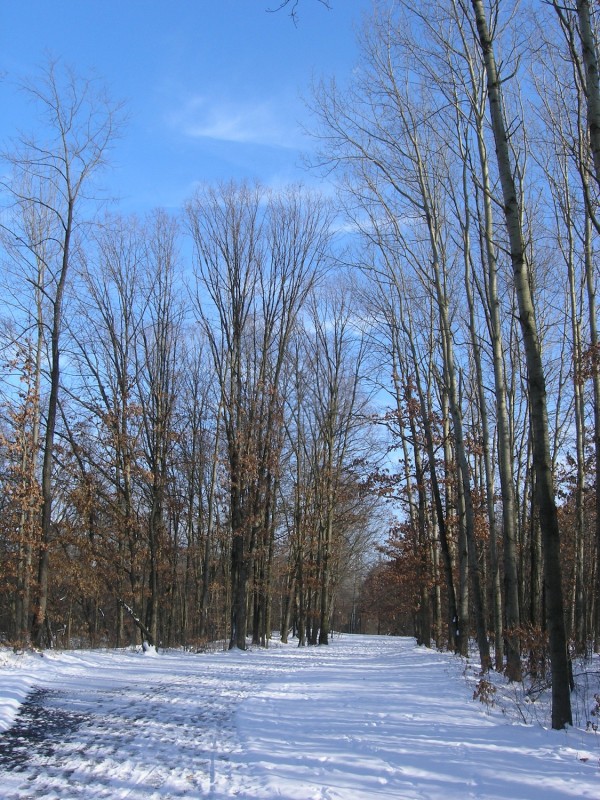
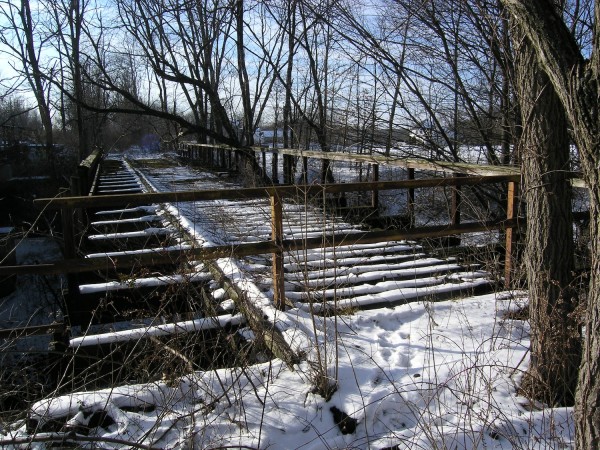

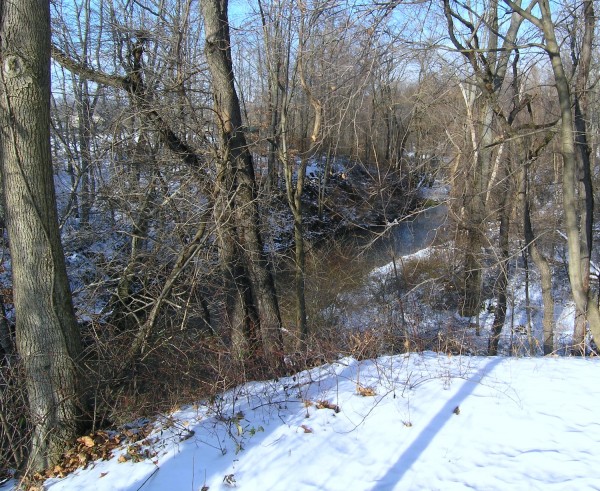



Nice plan for content warnings on Mastodon and the Fediverse. Now you need a Mastodon/Fediverse button on this blog.